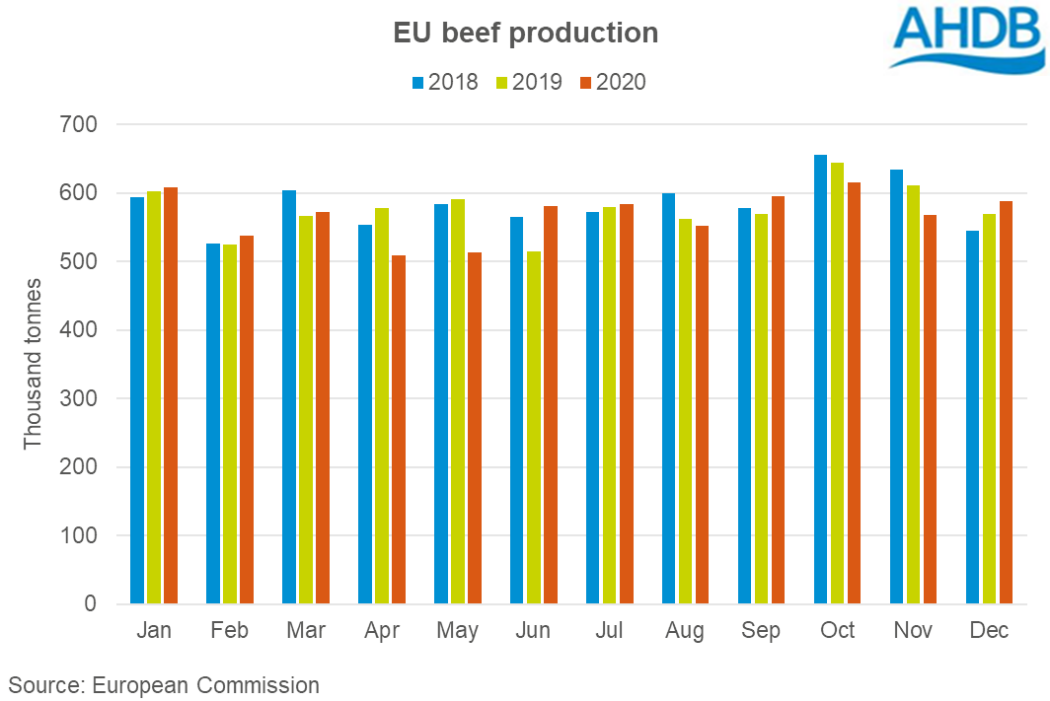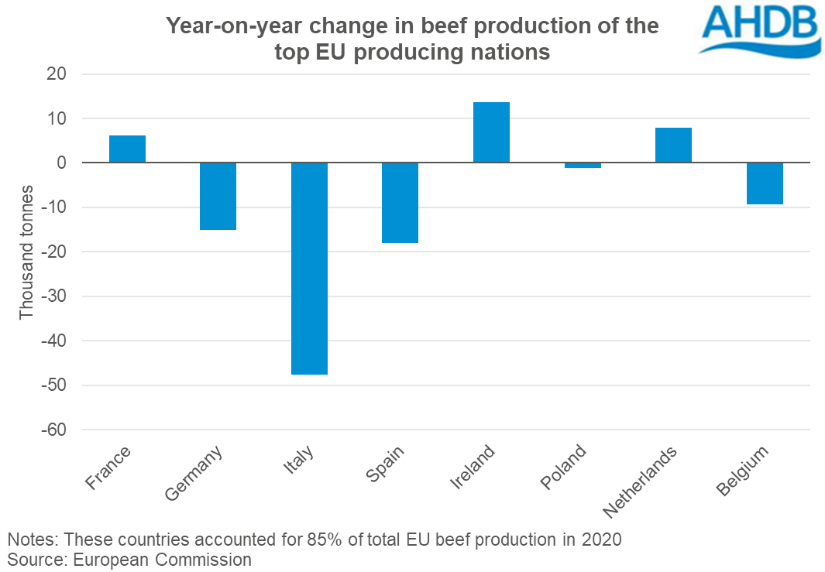EU beef production slips in 2020, exports grow
Wednesday, 31 March 2021
The EU produced 6.8 million tonnes of beef in 2020, down 1.2% from the year before, according to data from the European Commission. This is less of a drop than the Commission forecast in its autumn short-term outlook.
Cattle slaughter overall in the bloc was running slightly above year-earlier levels until April, when production took a hit, likely due to the onset of COVID-19 disruption. Production then bounced back in June, potentially as some foodservice reopened and processors got to grips with COVID-19 measures. Production then fluctuated around year-earlier levels for the rest of the year.

Year-on-year changes in production were mixed among the largest producing nations. Germany, Italy and Spain all experienced declines, with Italy showing the largest actual decline of 48,000 tonnes (-6%). Italy has been one of the hardest-hit EU countries during the pandemic, and was one of the first to impose national lockdown measures. Many Italian tanneries were affected too, almost entirely closing that sector at the height of the pandemic.
Production in France grew marginally (+0.4%), while in Ireland and the Netherlands production grew by 2%. Ireland showed the largest actual growth of +14,000 tonnes year-on-year. Polish production remained virtually unchanged (-0.2%).

Despite lower production in 2020, the EU grew its exports of fresh and frozen beef by 1.3% from the year before to 461,000 tonnes, slightly more than was forecast before Christmas. Just over 50% of this beef went to the UK, with volumes largely unchanged on the year before. Shipments grew to Asian markets, including Hong Kong and Japan, and to North American markets like Canada and the US. This, and growth in other markets, was enough to outweigh losses elsewhere, particularly to Algeria.
On the other hand, imports fell by 21% from the year before to 236,400 tonnes. Volumes fell from all key suppliers, but most notably from the UK and Brazil. This is likely due to widespread pandemic related disruption to EU foodservice demand.
Long-term, the European Commission expects that EU beef production will fall, driven by falling dairy and suckler cow numbers. However, falling EU consumption and growing global demand for beef is expected to support export levels from the bloc.

Sign up for regular updates
You can subscribe to receive Beef and Lamb market news straight to your inbox. Simply fill in your contact details on our online form.
While AHDB seeks to ensure that the information contained on this webpage is accurate at the time of publication, no warranty is given in respect of the information and data provided. You are responsible for how you use the information. To the maximum extent permitted by law, AHDB accepts no liability for loss, damage or injury howsoever caused or suffered (including that caused by negligence) directly or indirectly in relation to the information or data provided in this publication.
All intellectual property rights in the information and data on this webpage belong to or are licensed by AHDB. You are authorised to use such information for your internal business purposes only and you must not provide this information to any other third parties, including further publication of the information, or for commercial gain in any way whatsoever without the prior written permission of AHDB for each third party disclosure, publication or commercial arrangement. For more information, please see our Terms of Use and Privacy Notice or contact the Director of Corporate Affairs at info@ahdb.org.uk © Agriculture and Horticulture Development Board. All rights reserved.

